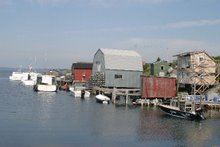 Unlike pteropods that "fly" through the water like a bird, this heteropod, Oxygyrus keraudreni, uses its flat foot like a paddle to push it through the water.
Unlike pteropods that "fly" through the water like a bird, this heteropod, Oxygyrus keraudreni, uses its flat foot like a paddle to push it through the water. Clio pyramidata is a pteropod – a swimming snail – and was one of the first zooplankton species ever to have its genes sequenced at sea.
Clio pyramidata is a pteropod – a swimming snail – and was one of the first zooplankton species ever to have its genes sequenced at sea.A massive effort to map the genomes of some of the world’s tiniest sea creatures has probed the briny depths more thoroughly than ever before.
The latest research cruise in the ongoing Census of Marine Zooplankton project pulled weird and wonderful looking organisms up from as deep as 5000 metres, far surpassing the 1000 m depth of previous expeditions.
The goal of the project is to create a comprehensive genetic "encyclopaedia" of all the zooplankton species that live in the open ocean by 2010.
Zooplankton are a broad range of protozoans, tiny crustaceans and other animals. They are a vital link between larger sea creatures and the microscopic algae that form the base of the marine food chain.
As over-fishing and climate change create unprecedented stresses for ocean life, scientists want to monitor how the entire community of organisms is responding. Only the tools of modern genetics make such a daunting task possible.
At a glance
"Separating and counting all those tiny organisms can take months or years, and by the time you're done, the conditions in the ocean have already changed again," says Peter Wiebe, chief scientist for the expedition and senior scientist at Woods Hole Oceanographic Institution in Massachusetts, US.
By collecting a comprehensive sample of zooplankton and sequencing all the species' genomes, scientists are creating a database of unique genetic "barcodes" that allows microscopic ocean life to be identified much more quickly. Scientists can then use "gene chips" that read these barcodes to identify and count all the tiny organisms in a sample of water, all at once.
"In the future, one can use these barcodes to see changes happening in whole ecosystems of zooplankton at a glance," Wiebe told New Scientist.
Deceiving looks
"This genetic approach is the next important step for this kind of research," says Tracy Mincer, a marine microbiologist at MIT, US. "They're the only group I know of doing this kind of genetic survey of ocean zooplankton." The latest cruise drew samples from the Atlantic Ocean between the south-eastern US coast and the mid-Atlantic ridge. Onboard gene sequencing machines allowed the scientists to map 220 of the 500 captured species' genomes while still at sea.
Scientists will use the genetic data to settle questions about how many species of zooplankton exist. Only about 5% of the genomes for the roughly 7000 known species of zooplankton have been sequenced, and identifying whether two individuals are the same species by appearance alone can be difficult.
The team have already found that some individuals previously thought to belong to the same species are actually separate species. "We're in the earliest stages of being able to assess the ocean's biodiversity," Wiebe says.

1 comment:
After watching the movie in class the other day, I was intrigued to find out more about the creatures of the open ocean. They are finding some very interesting species, however I do not think they will be able to collect all of the zooplankton species that live in the open ocean by the year 2010, but if they do hats off to them!
Furthermore, moderating of the bottom of the food chain is an excellent way to figure out the increasing problems taking place higher up the food chain.
Post a Comment